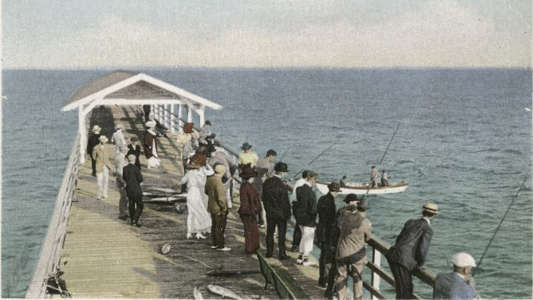What is Pier Fishing?

Pier fishing is fishing from piers, man-made structures that rise above bodies of water. For fishing classification purposes, pier fishing typically excludes floating docks and other small, low-to-the-water structures. Pier fishing focuses on tall piers such as working, pleasure, and fishing piers that rise high above tidal and storm water levels. While pier fishing exists in freshwater, it is more commonly associated with saltwater angling.
The height of the typical fishing pier has some implications for tackle choice and fishing techniques. For lure fishing, heavier lures or deep diving lures must be used to keep lures farther down in the water column on retrieves. Due to the height and angle of the tip of the rod above the water, light lures will quickly run up to the surface of the water which can be undesirable. Heavier rods and lines must be used not only to accommodate the heavier lures but also to raise fish to the deck of the pier unaided. For fish that are too big to be hoisted up on by rod and line alone, special nets and gaffs on long ropes must be used.
Since most fishing piers are built over sand, mud or other soft substrate with few snags bottom fishing is a common technique. A basic bait rig with a weight that rests on the bottom is often an effective choice. Due to how crowded a pier might get, a basic bait-and-wait approach can lead to fewer tangles and happier anglers than casting and retrieving lures or rigs.
Fishing piers can be private or public and range widely in accommodations. Some piers are private and pay-to-enter with bait and tackle shops, bathrooms, fish cleaning stations, live bait tanks, lights, and ample seating. Other piers can be open to the public and free but have limited space and tight rules on fishing.